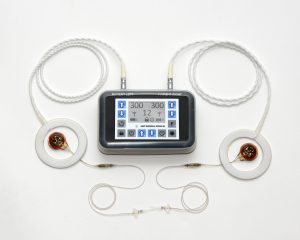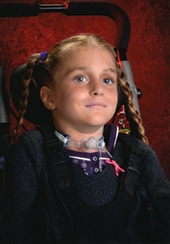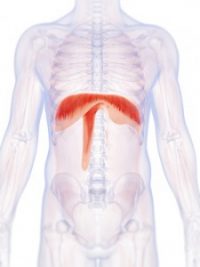Mechanical Ventilators and Diaphragm Pacing

Mechanical ventilation (MV) is often used to assist in breathing when injury or illness makes it difficult or impossible for the patient to breathe on their own. Although this may be used temporarily for some conditions, other conditions require mechanical ventilation on a full-time or near-full time basis.
Mechanical ventilators recently received much more public attention with the advent of COVID-19, since a significant number of infected people require breathing assistance. While COVID-19 patients may not need permanent respiratory support, there are other conditions that do require long-term breathing assistance.
Although it is a life-saving treatment, long-term use of mechanical ventilation can cause ventilator-associated pneumonias (VAP), acute respiratory stress syndrome (ARDS), ventilator-induced lung injury (VILI), barotrauma, infections due to bacteria inside tubing or tracheostomy, more suctioning of secretions, etc.
Another device that is used for breathing assistance is the Avery Diaphragm Pacemaker. While mechanical ventilators force air into the lungs under positive pressure, the Avery Diaphragm Pacemaker uses negative pressure where air is inhaled into the lungs by the contraction of the diaphragm.
Who is the Potential Candidate for a Diaphragm Pacemaker?

The pacemaker is suitable for those whose diaphragm, lungs, and phrenic nerves have residual function. The device is typically used by those with high (C1-C2) spinal cord injuries, brain-stem injuries, congenital or acquired central sleep apnea and diaphragm paralysis of various etiologies.
The Avery diaphragm pacing system consists of surgically implanted receivers and electrodes which are paired with an external transmitter with antennas worn on the skin directly over the implanted receivers. The system stimulates the phrenic nerves, causing the diaphragm to contract. This contraction causes inhalation of air. Exhalation subsequently occurs when stimulation stops and the diaphragm relaxes.
The Avery System is the only diaphragm pacing system with full pre-market approval from the US FDA and CE marking privileges under the European Active Implantable Medical Device Directive for both adult and pediatric use.
Advantages of Diaphragm Pacing Over Mechanical Ventilation
There are a variety of reasons many patients choose diaphragm pacing over mechanical ventilation. Note that you will need to consult your physician regarding the details of your specific case in order to determine if the Avery Diaphragm Pacemaker is a good fit for you. The reasons patients typically give that they prefer diaphragm pacing include:
Cost Savings
Unfortunately, finances are often a key determination in choosing healthcare. At Avery, we work hard to minimize that burden and help save patients money. The Avery Diaphragm Pacemaker produces a significant cost savings over mechanical ventilation. No routine maintenance or calibration is needed, and no filters and tubing are required. There is a significant reduction of pneumonias and hospital re-admission. While startup cost for a diaphragm pacemaker may be high, ongoing operating costs are very low and those pacing can easily save up to $20,000 per year in ventilator related expenses. 1
Natural Breathing Patterns
Mechanical ventilation uses what is known as Positive Pressure Ventilation to provide breathing. Essentially, it forces air into the lungs of the patient, providing respiratory support. Natural breathing uses negative pressure, which draws air into the lungs when the diaphragm contracts. This is the same method used in diaphragm pacing and is often preferred because of the “natural” feeling of breathing.
Improved Mobility

Mechanical ventilation typically requires being connected to a large machine via plastic tubing which, in turn, is connected to an electrical outlet. These two factors severely limit a patient’s mobility. With a diaphragm pacemaker, the implanted components are connected wirelessly to the Spirit external pulse generator, approximately the size of a small book. The Spirit transmits signals via two small loop antennas held to the skin with adhesive tape. It is powered by four AA batteries and it is held in a carrying case, which significantly enables greater mobility.
Avery patients have been able to participate in many activities with the diaphragm pacemaker, such as attending school or college, going to concerts, horseback riding, bowling and mini golf, and literally travelling around the world. Another advantage is that the Avery Diaphragm Pacemaker operates silently, enabling more comfort in social and educational settings.
Removed Tracheotomy (Decannulation)
In some cases, the tracheotomy can be removed. Decannulation depends on several factors, one of them being the age of the patient. It is not advised to decannulate young children.
Normal Functions (Including Ease of Eating, Drinking and Improved Sense of Smell)
Since no tubing is connected, breathing is through the nose and mouth and have an improved sense of taste and smell, as well as ease of eating and drinking. Speech is also improved.
Additional Advantages over Competitor Devices
Avery also offers multiple advantages over competitor devices. These include:
- No percutaneous wires from the external device into the body (signals to the implants are transmitted wirelessly);
- An extensive track record of over 49 years and well-documented long-term safety record;
- Bilateral redundancy – if one side fails, the other still works;
- Reduced risk of infections, including ventilator assisted pneumonia
For more information, you can view a comparison of the devices here.



